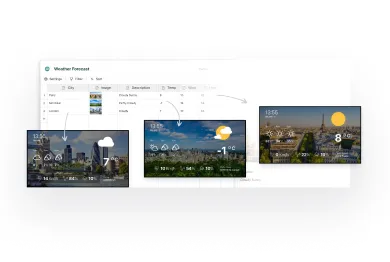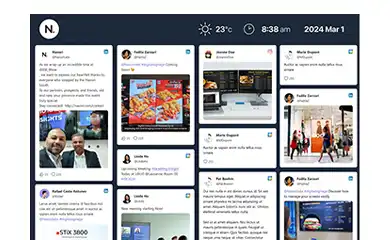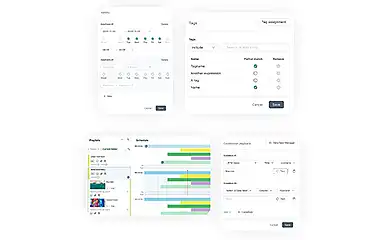With Navori Labs, easily visualize key performance indicators (KPIs) by displaying your business dashboards. This approach allows you to monitor essential metrics such as sales, customer behavior, and other critical data, helping you gauge business performance and identify areas for improvement.
Navori supports integration with a variety of data sources, including sales and CRM systems, financial software, ERP, social media, and marketing platforms, as well as external market research and employee performance systems. This broad compatibility ensures you can leverage comprehensive insights from across your organization.
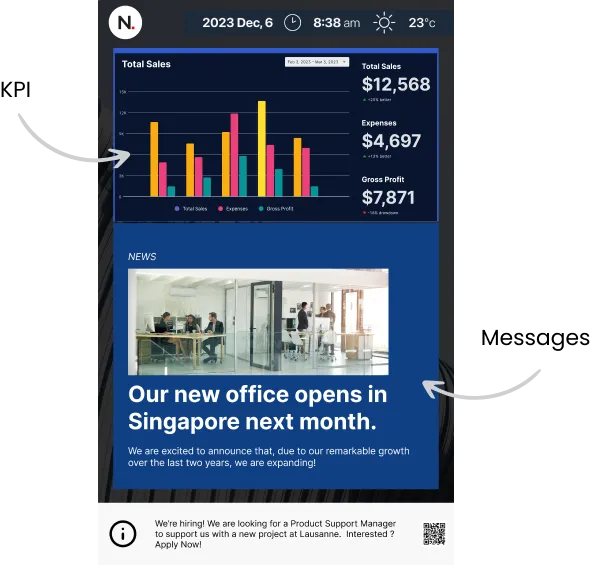











KPI Dashboard Features

Customize your Dashboards
Customize your dashboards to show the KPIs, metrics, and insights important to your business. Navori Business Dashboards offer customizable widgets, charts, graphs, and gauges, letting you create eye-catching dashboards that present your data.
Discover Navori's Content Manager
Real-Time Data Visualization
Keep up with fast-changing business conditions through real-time data visualization. See immediate insights into areas like sales trends, customer habits, and marketing success. Navori Business Dashboards let you track important metrics as they happen, helping you adapt quickly to new market situations.
Discover Live Data
Automate Content When Meeting KPIs
Set up “Play If” scenarios that trigger congratulatory messages and content automatically when teams reach or surpass specific KPI targets. This not only celebrates their achievements but also motivates continued success and engagement.
Discover Content Automation
Integrate Any Data Source, With No Code
Easily connect to any data source using Navori’s connectors, from Power BI and Workplace to Engage, among others. You can create your connectors or request a custom one made by Navori Labs, all without needing to code.
Discover Navori's Designerin 4 Easy Steps
Navori KPI dashboards streamline the process of data analysis, making it easy to track and respond to business metrics efficiently.
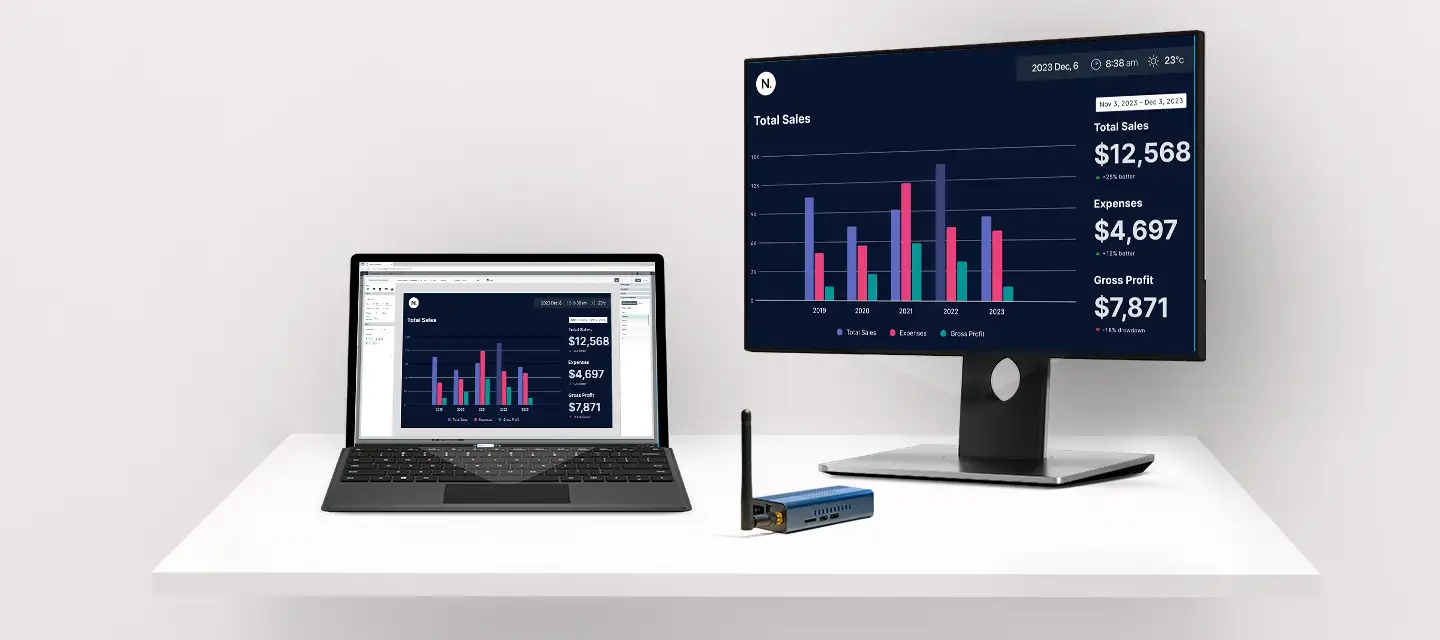
Data Integration
Start by integrating your data sources within Navori’s Data Feed Manager. This can include sales figures, customer traffic, staff performance metrics, or any other relevant data. Navori’s system is capable of pulling from various data streams to ensure a comprehensive view.
Dashboard Setup
Use Navori’s intuitive designer tool to set up your KPI dashboards. Organize key performance indicators (KPIs) that you want to track, such as daily sales, average transaction value, or customer satisfaction rates.
Real-Time Monitoring
Once set up, your dashboards will display real-time data. This enables continuous monitoring and instant insights into how different areas of your business are performing. You can watch these metrics update throughout the day to see the immediate impact of business decisions or external factors.
Decision Making
With real-time data at your fingertips, make informed decisions quickly. Use the insights gained from your dashboards to identify trends, adjust strategies, and implement improvements. This proactive approach helps optimize operations and enhance overall business performance.
Proactive Decision-Making
By monitoring critical metrics in real-time on your screens, organizations can identify emerging trends, patterns, and anomalies before they escalate into significant issues. This proactive approach to decision-making allows businesses to address challenges swiftly and capitalize on opportunities as they arise, leading to better outcomes and increased competitiveness.


Get Real-Time Insights
Business dashboards are strategically displayed in key locations, enabling employees to quickly understand important insights and data trends at a glance. Staff are kept informed and nimble by this efficient presentation, allowing for improved decision-making without requiring in-depth analysis or system access.
Tracking Performance and Accountability
Employees’ ability to track performance and business activities in real-time is enabled by Navori’s integration with real-time data. This ensures that digital signage always shows the most up-to-date and relevant data, allowing employees to keep an eye on progress, identify trends, and quickly react to changing business needs.

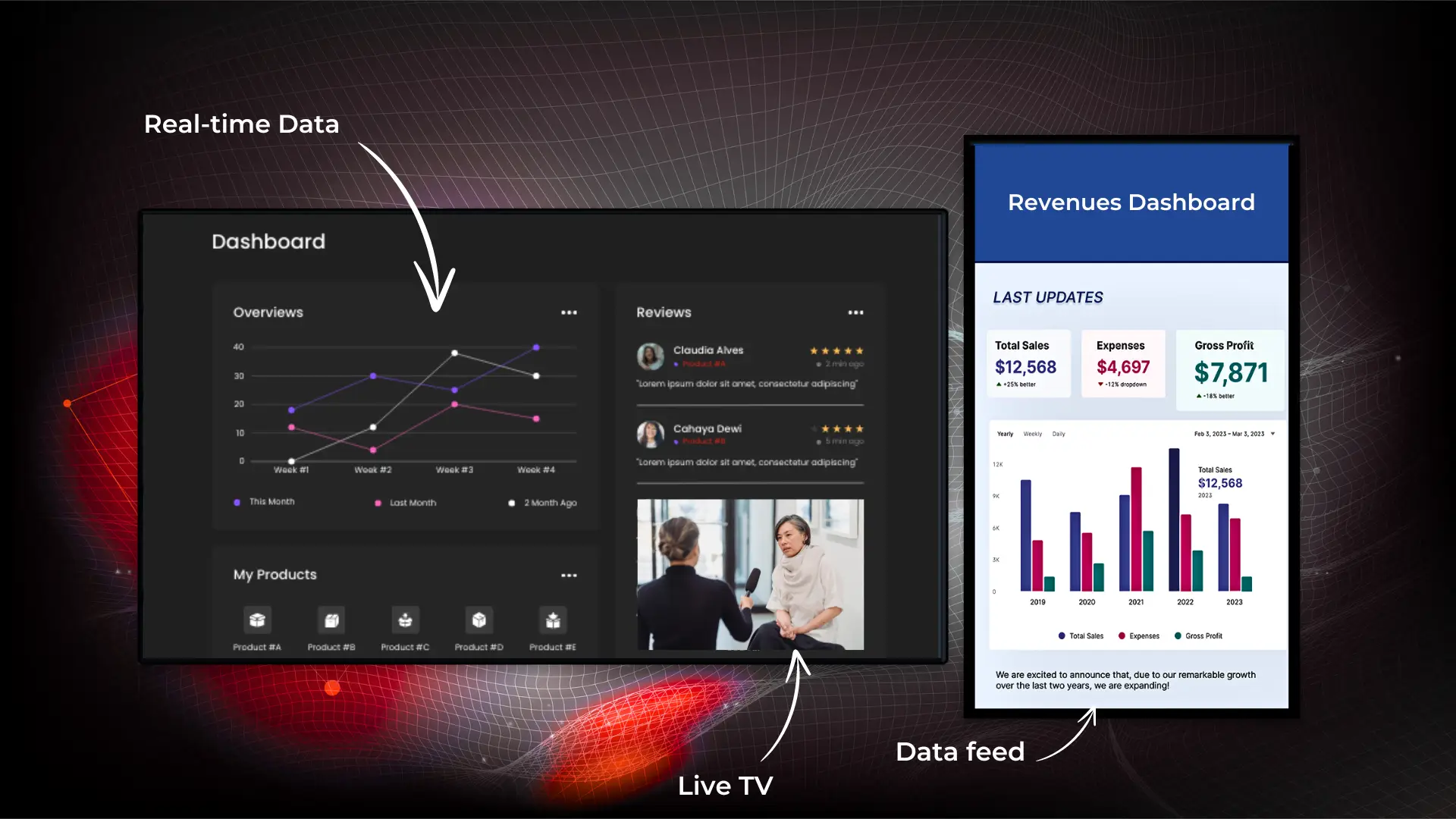
Display Dashboards on Any Screen Regardless of Brand or Orientation
Regardless of the type, brand of screen, orientation, or resolution, Navori software ensures dashboards are accessible across the organization, making information available to all employees.
Corporate Dashboards
Navori software seamlessly integrates with Power BI to display dynamic corporate dashboards, transforming the way businesses visualize and interact with critical data. This integration enables organizations to showcase real-time performance metrics, financial summaries, and operational insights directly on digital signage throughout the workplace.
Whether it’s tracking sales trends, monitoring supply chain efficiency, or displaying KPIs, Navori ensures that these vital statistics are accessible and visually compelling. This setup is particularly beneficial in corporate settings where informed decision-making and transparency are key, allowing employees and management to stay updated with the latest business analytics at a glance

Lookup your data, Display Only Relevant Information
Businesses are enabled by Navori software to show only the most relevant data on their digital signage. Data lookups are customized so that employees see information that matters most, tailored to their specific roles or goals, boosting efficiency and focus.

Trigger Content Based on Live Data and Set Rules
Live data from various sources and applications is centralized by Navori software, consolidating it into one dashboard. This gives organizations a full view of their operations, combining information from CRM systems, financial software, social media, and more, displayed on digital signage for easy access and analysis.
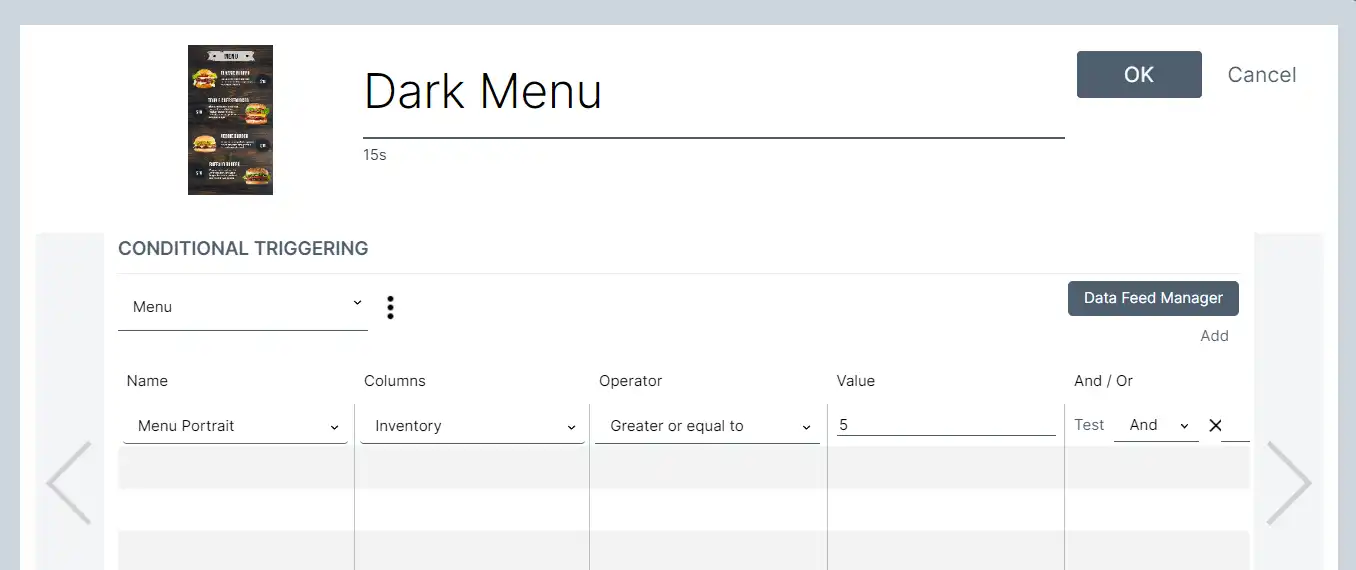
Create your Own KPI Dashboard in Minutes!
Businesses can quickly and easily create their own KPI dashboards thanks to a user-friendly interface. This allows for the creation of dashboards that meet specific organizational needs and goals without needing a lot of technical knowledge.

